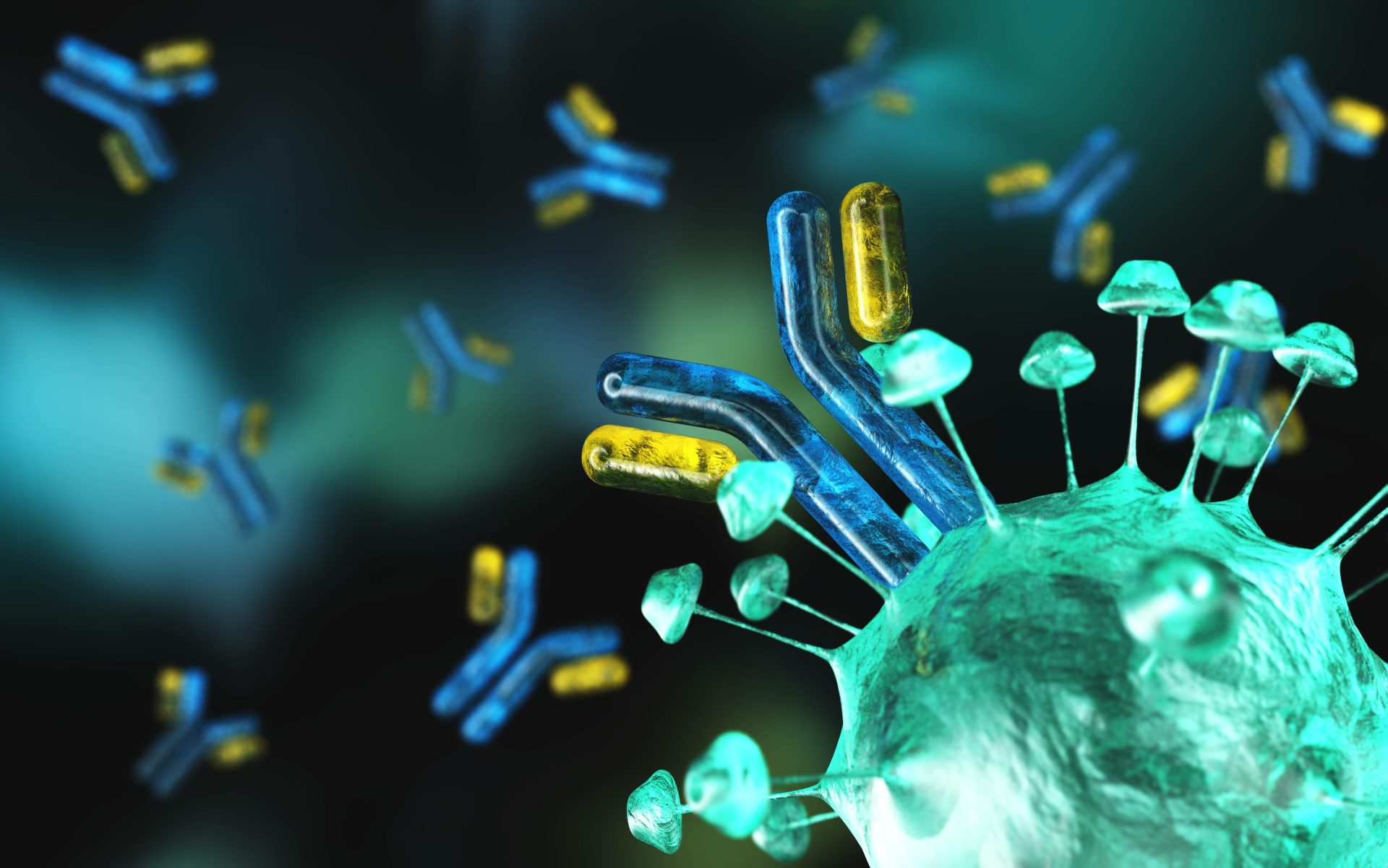What are glycans?
What comes to mind when you hear the word “sugar”?
It can be sweet, so-called “sugar,” or glucose, which is the source of energy.
In fact, there are various kinds of sugars in nature. Some of them are bitter and some taste like umami (Figure 1 below).
Sugars can actually connect to each other. When sugars are connected like a chain, it becomes a “sugar chain”, known as glycan.
The combination of sugar types and connections is enormous. It can have various properties and shapes and can be packed with various information.
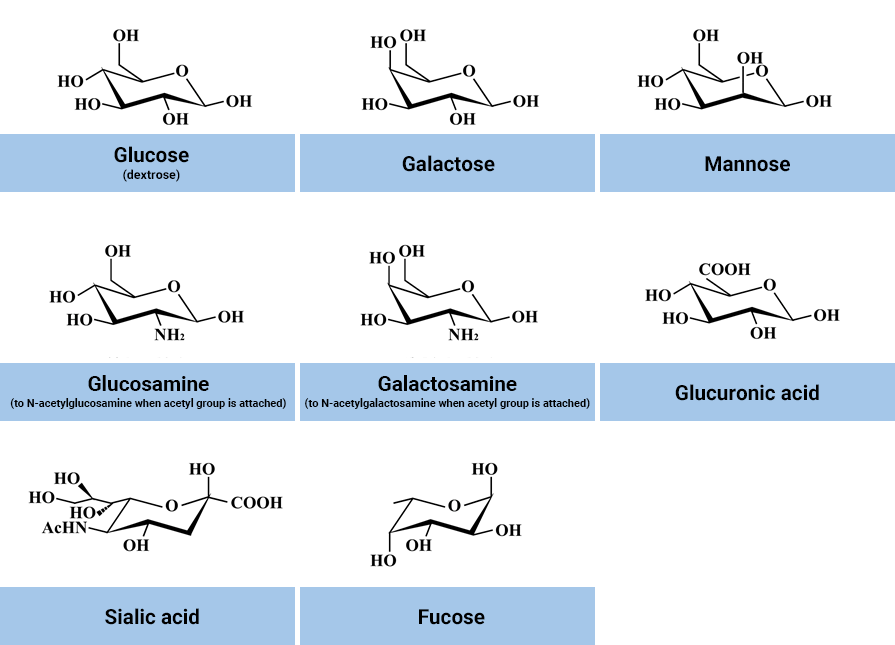
Shown here are just a few of the “sugars” used in sugar chains (glycans).
There are many other structures. Deep-sea organisms, bacteria, and plants can synthesize more complex sugars.
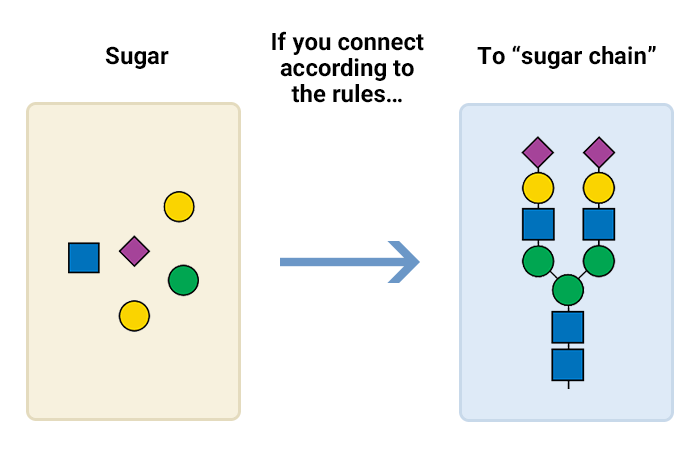
Functions of Glycans
Our body consists of 37 trillion cells. Nerves, muscles, liver, kidneys, blood vessels… Various types of cells communicate and work together to move and maintain our bodies.
All cell surfaces are covered with sugar chains. Not all cells have the same shape of glycans.
Cells produce glycans in specific forms based on their type. For instance, nerve cells produce glycans with distinct characteristics, while liver cells produce glycans unique to them. Each cell type possesses its own individuality, akin to the unique “face” of a cell.
When cells individually fulfill their roles, when they distinguish cells from each other…their characteristic glycan structures play an active role in a variety of situations.
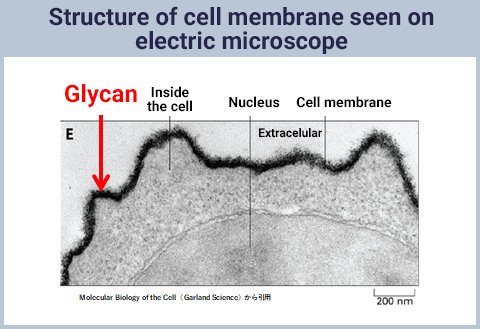
Cell Structure
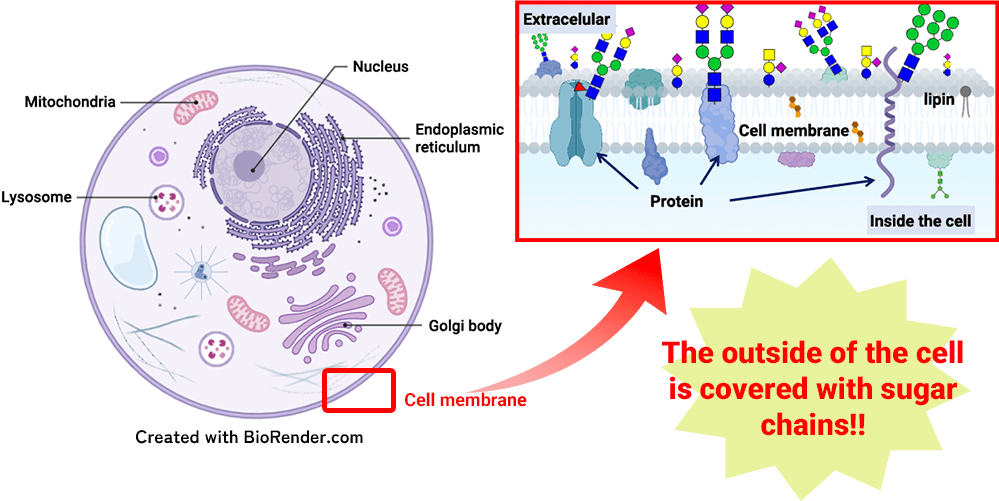
The relationship between the functions of glycans and diseases
Glycans have a huge number of glycan structures and have various roles, so there are still many things we do not understand. However, life cannot be maintained if glycans cannot be produced at all. It is also becoming clear that various diseases are caused when the glycan structure changes for some reason.
Examples of the functions of some glycans and their association with diseases are shown below.
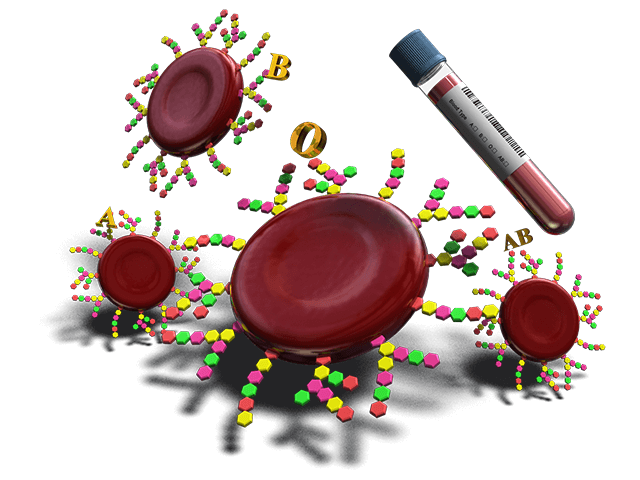
What is the ABO blood type?
Indeed, the ABO blood type is determined by a minor variation in the structure of the “sugar chain.” The glycans on the surface of red blood cells exhibit distinct shapes for individuals with A, B, and O blood types. These subtle differences enable the immune system to recognize and differentiate between their own blood type and that of others. Thus, individuals can discern whether the blood they encounter belongs to their own type or not by the dissimilarities in glycans.
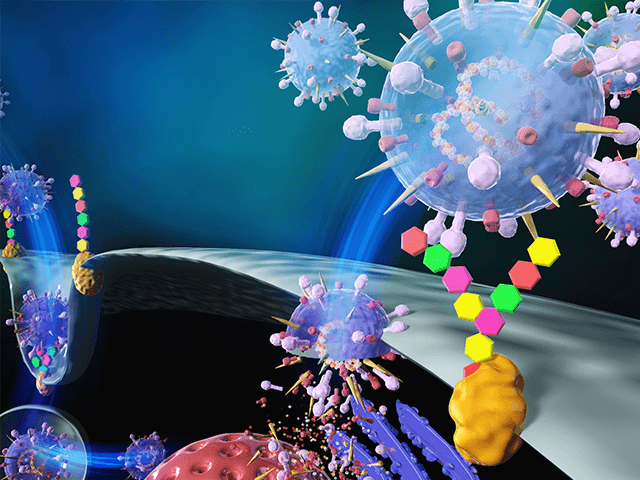
Virus infection and sugar chains
Influenza virus that spreads every year. Influenza uses glycans to infect. Drugs such as oseltamivir, which is effective against influenza, were developed from the glycan research. In addition, it is becoming clear that glycans are involved in the infection of the new coronavirus.

Glycans and disease
Each cell builds glycans in the form that it needs and carries out life activities.
If the glycan changes for some reason, it can cause illness.
It has been reported that glycans are altered in various diseases such as cancer, diabetes, and dementia.
It is also becoming clear that changes in glycans are deeply involved in various pathologies.
Familiar Glycans
After reading to the above explanation, glycans seems to be difficult to understand… you may feel that they are in a distant world.
However, there are many things around us that are made of glycans. Various organisms produce these sugar chains as they need to support their lives, and people use these glycans and incorporate them into their daily lives. Surprisingly, glycans are familiar.
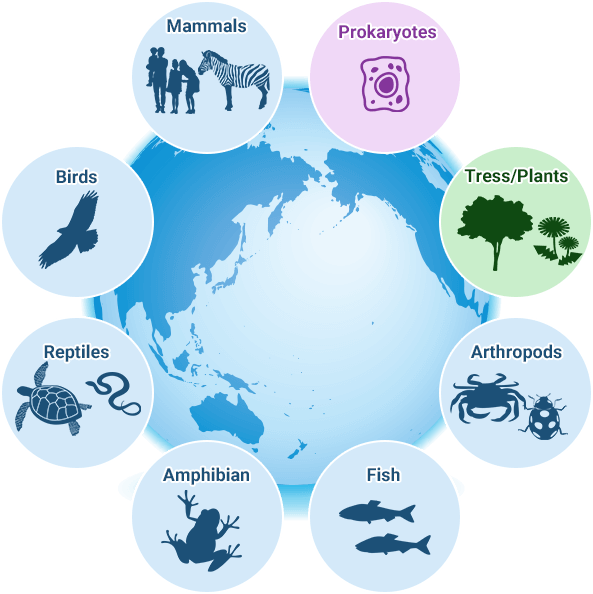
Examples of familiar glycans
Starch
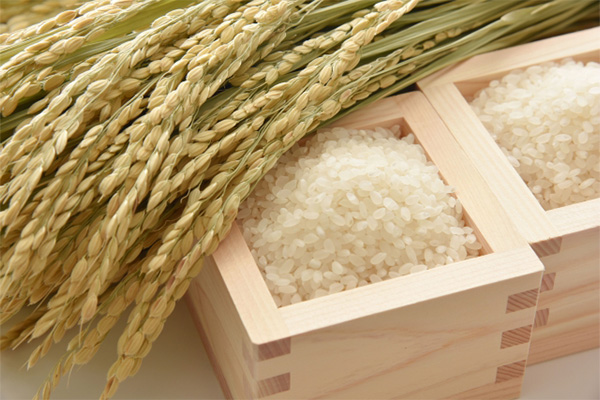
So-called carbohydrates contained in grains such as rice and potatoes.
A substance in which “glucose” is linked (technically, it is linked by glucose α1,4) .
It becomes an energy source.
Cellulose
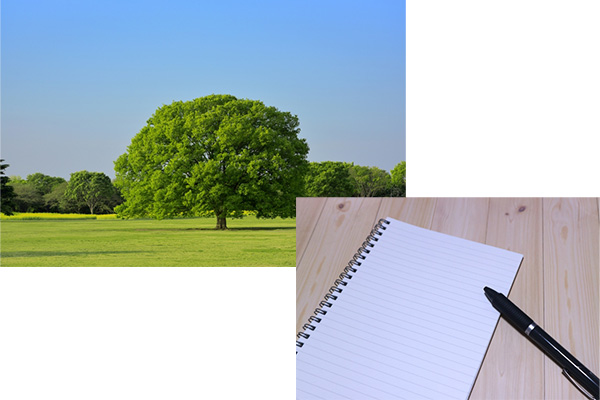
A product in which “glucose” is connected (connected at β1,4) .
Making a hard tree trunk or turning it into paper.
Even though it is sugar, it is inedible and difficult to decompose.
Fucoidan
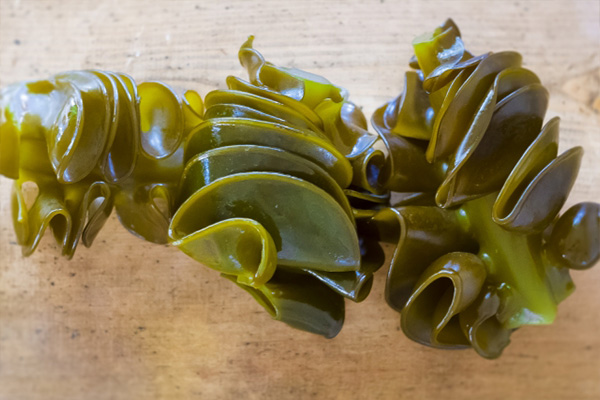
Sticky ingredients of seaweed such as Mozuku, Mekabu, and Kombu.
It is also made up of sugar (fucose)
Chitin/Chitosan
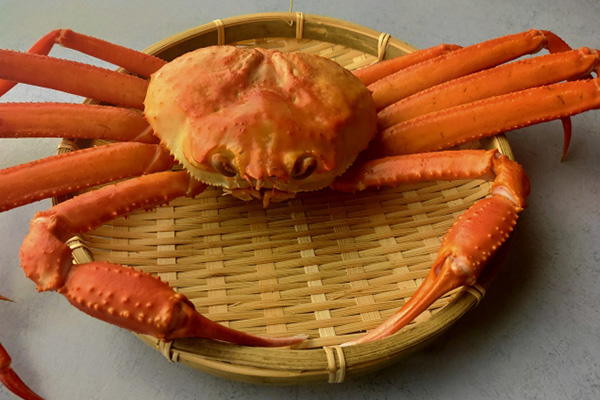
Shrimp and crab shells are like light plastic.
The main ingredients are chitin and chitosan. It is also made up of sugar.
It is a sugar called glucosamine that is familiar on TV.
Mannan
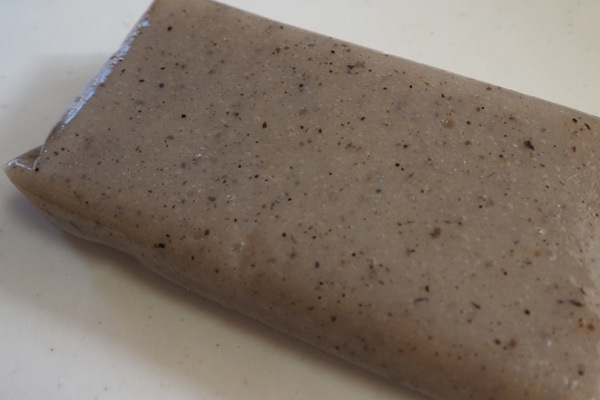
Ingredients such as konjac. A water-soluble dietary fiber that is linked to a sugar called mannose. It is a familiar diet food.
Hyaluronic acid
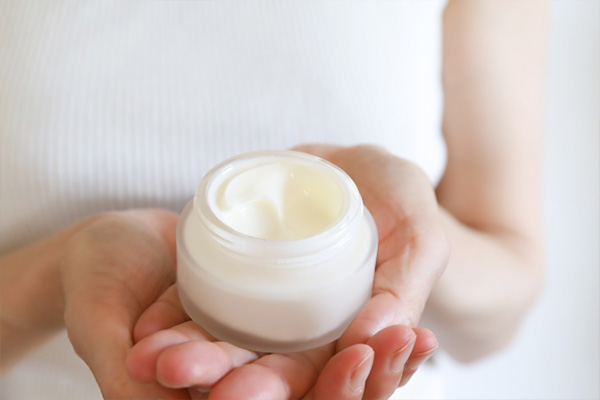
Hyaluronic acid is a moisturizing ingredient and is familiar in cosmetics. Hyaluronic acid is made up of two types of sugars, “N-acetylglucosamine” and “glucuronic acid”, which are alternately linked several hundred times in a straight line.
What if we understand the glycans?
Towards a future without suffering from illness
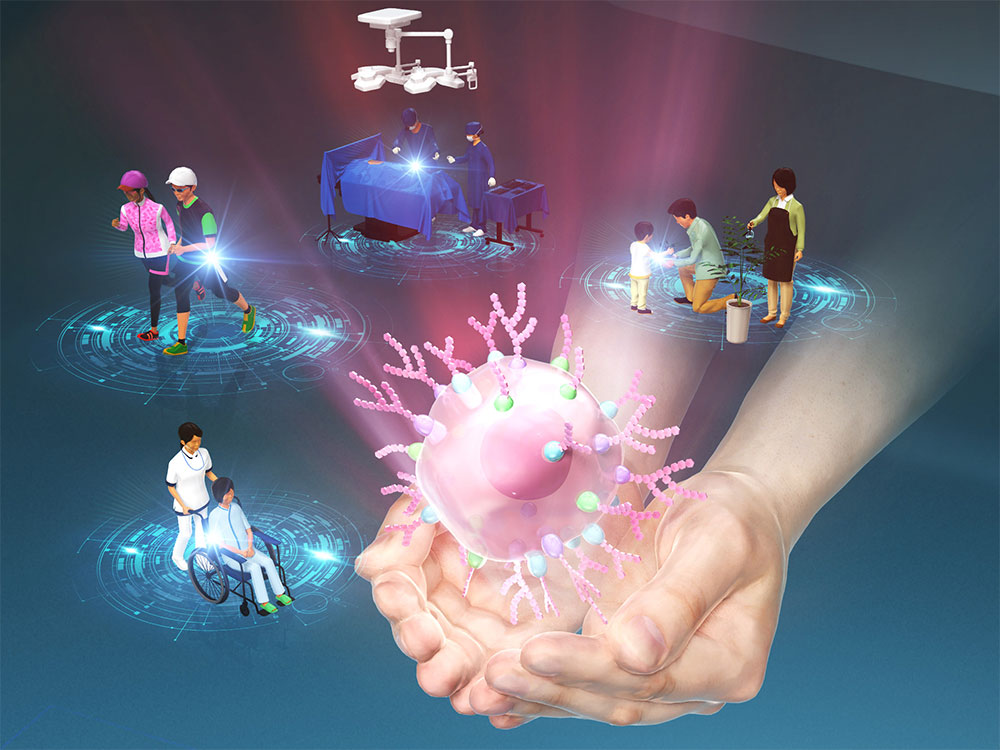
Cancer, diabetes, kidney disease, dementia…there are many diseases that cannot be cured even in modern times when medical care has advanced. If we can decipher the information of glycans and understand the true mechanism of life, we may be able to make “ultra-early diagnosis” and treat such diseases as early as possible.
“A future without suffering from illness.” It may sound like a dream, but if we can truly understand the structure of life, we may be able to get closer to such a future.
Japanese glycan researchers will continue to take on the challenge of deciphering the information of “glycans” and dramatically develop life sciences.

